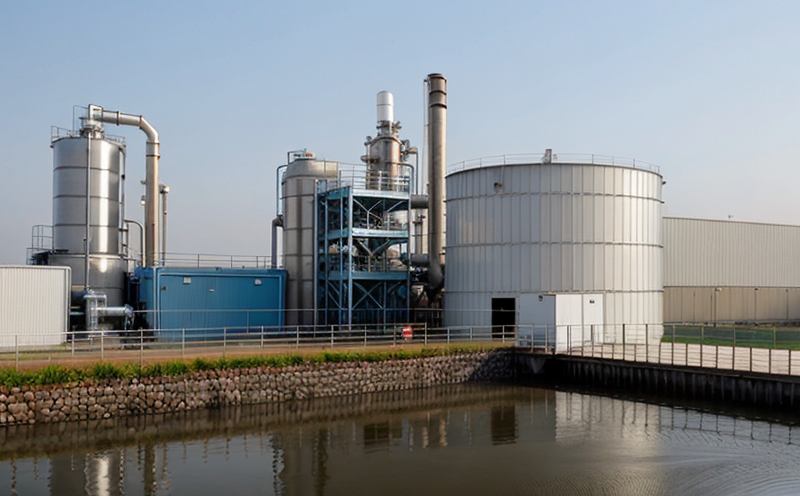ASTM D1688 Copper Content Testing in Processing Water
The ASTM D1688 standard provides a method to determine copper content in water samples. This is particularly important for industrial manufacturing and processing facilities where water quality can significantly impact the efficiency, safety, and compliance of operations.
Water containing higher than acceptable levels of copper can cause various issues within processing facilities. For instance, it may interfere with chemical reactions, affect equipment performance, and lead to regulatory non-compliance. The ASTM D1688 test ensures that water used in these processes meets the required quality standards.
The testing procedure involves a series of steps designed to ensure accuracy and precision. First, the sample must be prepared according to specific guidelines outlined in the standard. This includes ensuring the water is representative and free from contaminants that might interfere with the results.
Once prepared, the solution undergoes colorimetric analysis using a spectrophotometer. This method measures the amount of copper present by comparing the absorbance of the sample against a series of reference solutions of known copper concentration. The equipment used for this analysis is calibrated to provide accurate readings and ensure consistency.
The standard provides detailed guidelines on the acceptance criteria, which are critical for determining whether the water meets the required specifications. Any deviations from these criteria can indicate potential issues that need addressing to maintain optimal operational conditions.
In summary, ASTM D1688 is a vital tool in ensuring the quality of processing water within industrial facilities. It helps in maintaining consistent product quality, preventing equipment damage, and avoiding regulatory penalties. By adhering to this standard, companies can ensure their processes are running smoothly and efficiently.
Scope and Methodology
The scope of ASTM D1688 is specifically focused on the determination of copper content in water samples intended for use in industrial processing facilities. This includes water used in various stages of manufacturing, such as cooling systems, cleaning processes, and chemical reactions.
The methodology outlined in the standard involves several key steps:
- Sampling: Samples are collected from the point of distribution or intake into the facility.
- Preparation: The samples are prepared according to specific guidelines to ensure they are representative and free from contaminants.
- Analysis: Colorimetric analysis is performed using a spectrophotometer. A series of reference solutions with known copper concentrations are used for comparison.
- Reporting: Results are reported based on the absorbance measured, which directly correlates to the copper content in the sample.
The accuracy and precision of these steps ensure that the results are reliable and can be used to make informed decisions about water quality. Compliance with ASTM D1688 helps facilities meet their internal standards as well as any relevant regulatory requirements.
Industry Applications
This testing is particularly applicable in industries such as metalworking, electronics manufacturing, and chemical processing where the purity of water used can significantly impact product quality and process efficiency. Here are some specific applications:
- Metalworking: Copper contamination can lead to surface defects on metal products.
- Electronics Manufacturing: Impurities in water can affect the performance and reliability of electronic components.
- Chemical Processing: Copper can react with chemicals, leading to unwanted by-products that can disrupt the chemical process.
The results from ASTM D1688 testing help these industries ensure their processes are optimized for maximum efficiency and quality. By adhering to this standard, facilities can maintain consistent product quality and avoid potential disruptions in production.
Competitive Advantage and Market Impact
Adhering to ASTM D1688 provides significant competitive advantages in the industrial manufacturing sector:
- Quality Assurance: Ensures that all water used in processing meets the highest quality standards.
- Cost Efficiency: By preventing equipment damage and operational inefficiencies, companies can reduce maintenance costs and downtime.
- Regulatory Compliance: Ensures compliance with local and international regulations regarding water quality.
- Customer Satisfaction: Maintaining high-quality standards leads to better product performance and customer satisfaction.
In the market, facilities that adhere to ASTM D1688 are seen as leaders in their industry. They can command higher prices for their products due to the reliability and quality assurance provided by this standard. This not only enhances their reputation but also supports sustainable business practices that benefit both the company and its customers.





